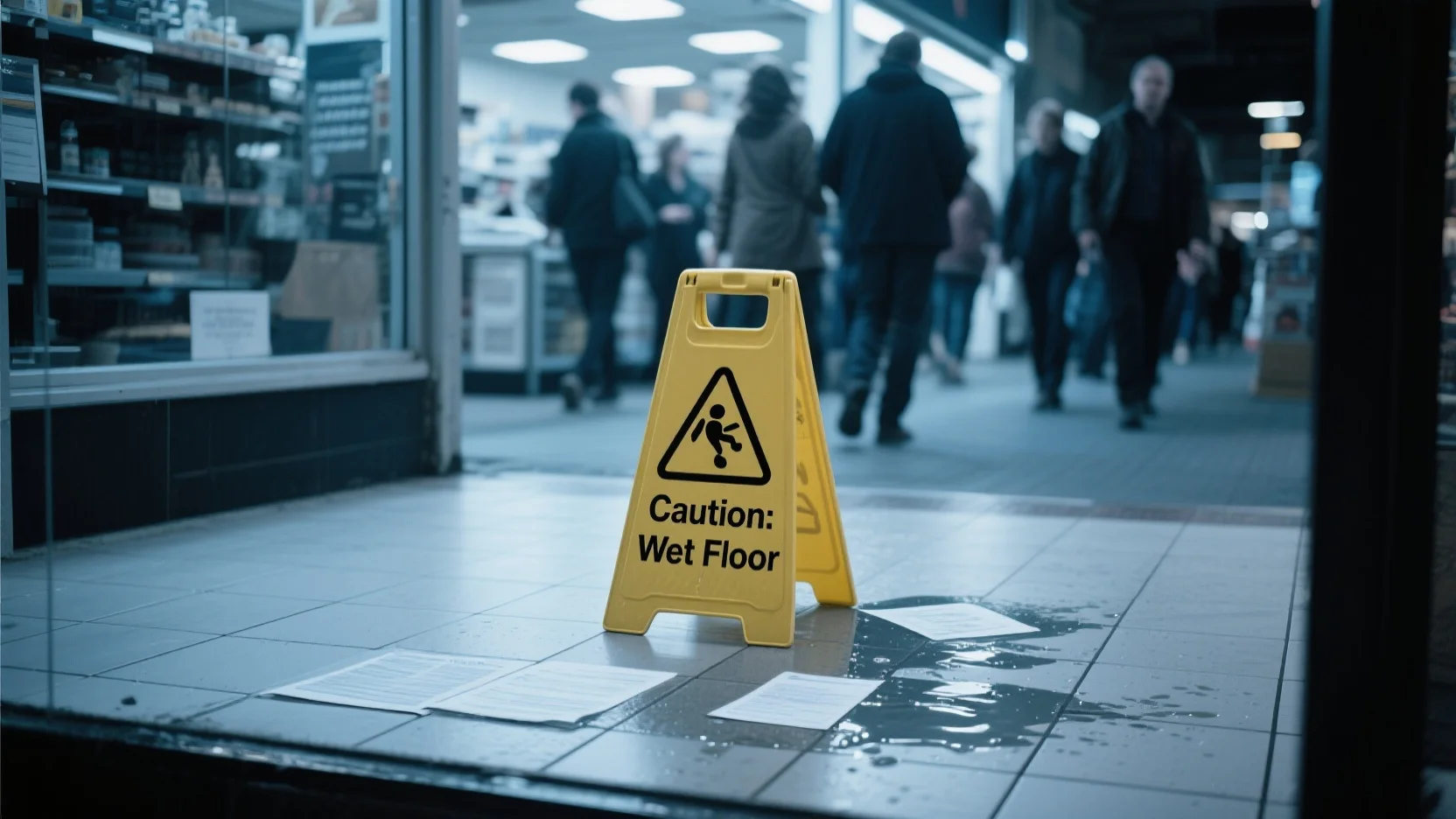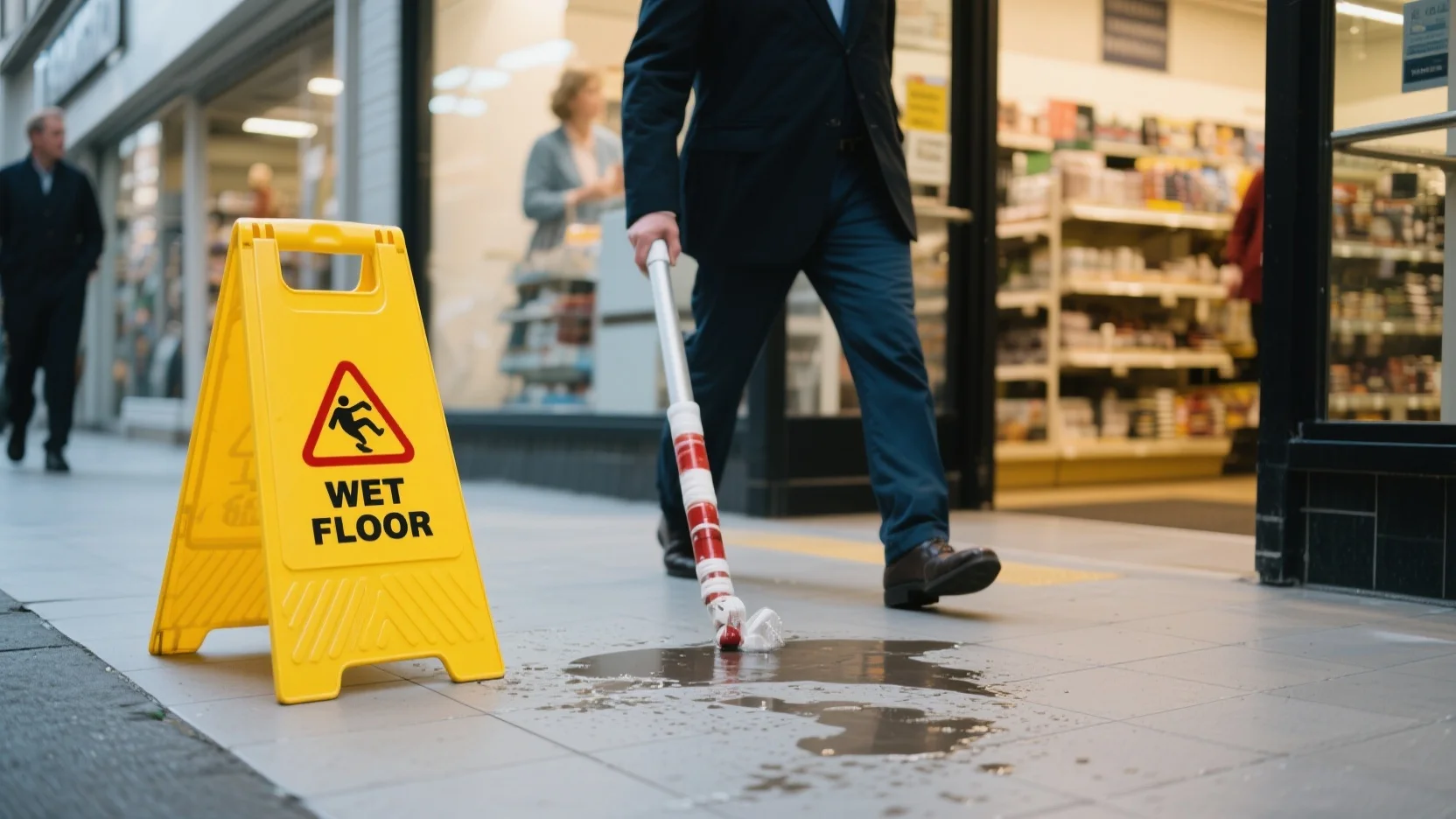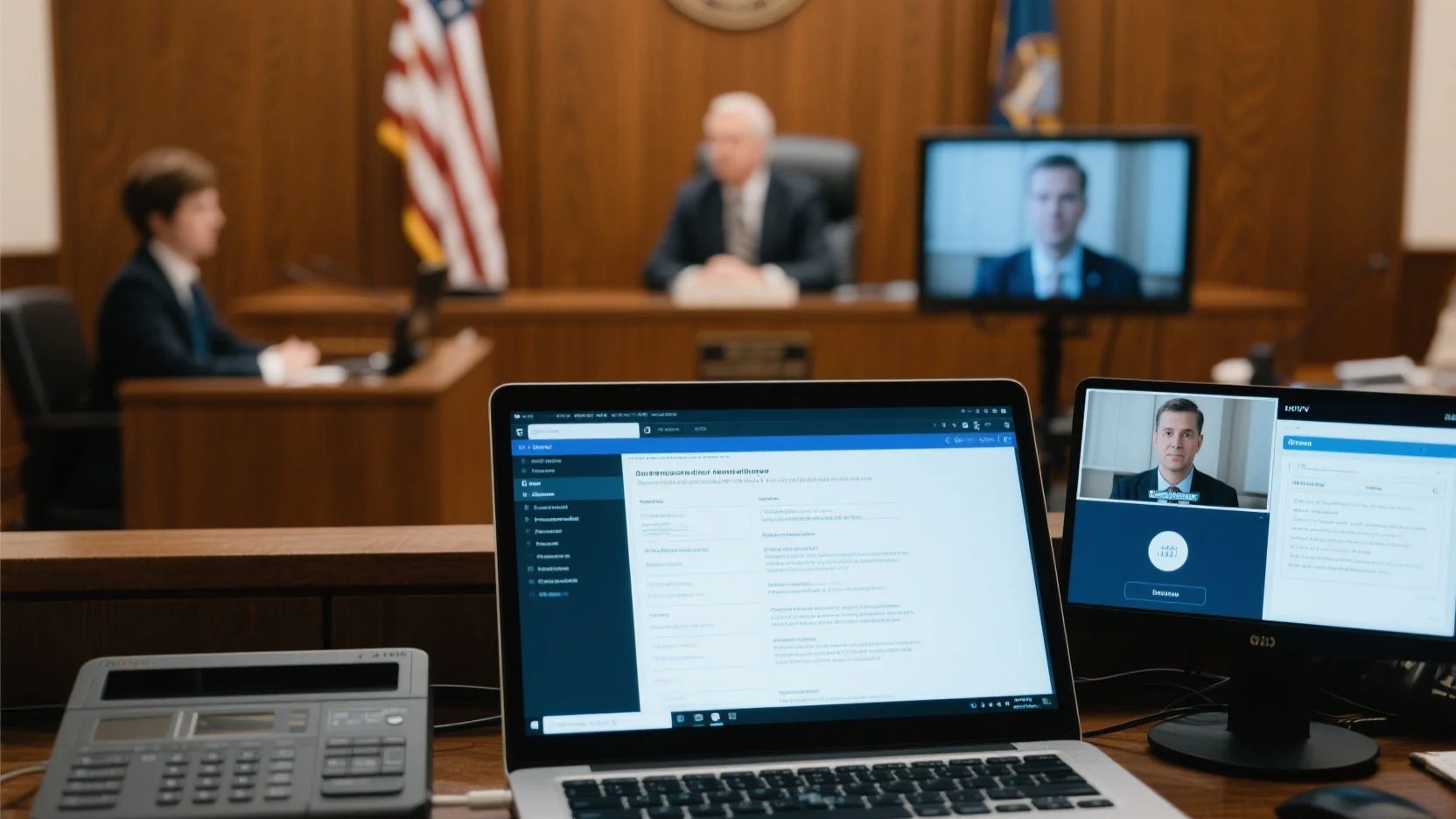Did you know slip-and-fall accidents at retail premises are a major cause of personal injury claims? A 2023 SEMrush study revealed that the average slip-and-fall settlement in the US exceeded $40,000. When it comes to these incidents, there’s a stark contrast between what a responsible store can offer (Premium) and what a negligent one might subject you to (Counterfeit). Our buying guide will give you the best insights on storefront hazard liability, wet floor sign requirements, and lawsuit advice. With a Best Price Guarantee and Free Installation Included for related safety measures in some local areas, don’t miss out on this essential information.
Slip-and-fall at retail premises
Did you know that slip-and-fall accidents in retail stores account for a significant portion of personal injury claims each year? These incidents can result in hefty financial losses for both the injured customers and the store owners. In 2023, a SEMrush study found that the average cost of a slip-and-fall settlement in the United States was over $40,000. Let’s delve into the details of slip-and-fall incidents at retail premises.
Definition of slip-and-fall incident at retail premises
Subset of premises liability claims
Slip and fall accidents are a subset of premises liability claims. Premises liability law holds property owners or managers responsible for keeping their property safe for visitors. When a person slips, trips, or falls on a retail store’s property and gets injured, it falls under this legal framework. For example, if a customer slips on a wet floor in a supermarket and breaks their arm, this is a slip-and-fall incident within the scope of premises liability.
Occurrence due to hazardous conditions
These incidents occur as a result of dangerous conditions on the store’s property. Customers can trip over objects in aisles, slip on spilled liquids or foods, or fall due to snow or water tracked in from outside. For instance, a customer might slip on a puddle of milk that was spilled in the dairy aisle and not cleaned up promptly.
Store’s potential liability based on negligence
The store may be held liable if it was negligent in maintaining a safe environment. A store has a legal duty to not create a hazardous condition. Many courts will find that a wet floor without warning signs is a hazardous condition. For example, if there is a leaky pipe dripping water on the floor, and the store owner fails to fix it or put up a warning sign, they may be held liable if a customer slips and gets injured.
Pro Tip: If you own a retail store, conduct regular safety inspections to identify and fix any potential hazards.

Elements of negligence in slip-and-fall claim against retail store
To prove a slip-and-fall claim against a retail store, the injured party typically needs to establish four elements of negligence:
- Duty of care: The store owed a duty to the customer to keep the premises safe. Most retail stores have a legal obligation to exercise reasonable care to ensure the safety of their customers.
- Breach of duty: The store breached that duty. This could be by failing to clean up a spill in a timely manner or not posting a wet floor sign.
- Causation: The breach of duty directly caused the customer’s injury. For example, if the customer slipped on a wet floor where there was no warning sign, and the store knew about the wet condition but did nothing, the store’s negligence caused the fall.
- Damages: The customer suffered actual harm, such as medical expenses, lost wages, or pain and suffering.
As recommended by safety experts in the retail industry, stores should have a clear protocol for handling spills and maintaining a safe environment.
Determining shop owner negligence in slip-and-fall cases
Determining shop owner negligence can be complex. Evidence plays a crucial role in these cases.
- Photos or videos: Of the hazardous condition, such as a wet floor or a tripping hazard.
- Witness statements: From other customers or employees who saw the incident or the condition before the fall.
- Store records: Such as cleaning logs to show if the area was supposed to be cleaned and if there were any previous reports of the same hazard.
- Medical records: To prove the extent of the injuries and the resulting costs.
For example, in a case where a customer slipped on a wet floor in a department store, the customer’s lawyer was able to obtain video footage from the store’s security cameras showing that the spill had been there for over an hour without anyone cleaning it up or putting up a warning sign. This was strong evidence of the store’s negligence.
Pro Tip: If you are a customer who has slipped and fallen in a store, try to take photos or videos of the scene as soon as possible, and get contact information from any witnesses.
Legal implications for shop owners
Shop owners face significant legal risks in slip-and-fall cases. If found liable, they may be required to pay for the customer’s medical expenses, lost wages, pain and suffering, and in some cases, punitive damages. A lawsuit can also damage the store’s reputation, leading to a loss of customers.
- Have proper insurance coverage: To protect against potential liability claims.
- Train employees: On safety procedures, including how to clean up spills and when to use wet floor signs.
- Maintain accurate records: Of cleaning schedules and safety inspections.
Top-performing solutions for reducing liability in slip-and-fall cases include using advanced cleaning equipment that reduces drying time and implementing a regular safety training program for employees.
Wet floor sign requirements
Wet floor signs are a crucial part of preventing slip-and-fall accidents. These signs are typically bright yellow for high visibility, made of durable plastic or metal, designed with clear symbols and text, and are portable and foldable for easy storage and deployment.
When is a wet floor sign required by law?
The wet floor sign isn’t just a courtesy, it’s required by law. It might be needed due to a spill, recent mopping, or people walking in from the rain. Business owners and commercial property managers have a duty to use wet floor signs in these situations.
Best practices for placement
Proper placement of wet floor signs is crucial to preventing accidents. They should be positioned in a way that can be seen well before someone reaches the wet area. Consider placing the sign at eye level or near eye-catching locations such as entrances, aisles, corners, or stairwells. For example, if a store employee is mopping a section of the floor near the entrance, the wet floor sign should be placed where customers can easily see it as they enter the store.
Pro Tip: Have multiple wet floor signs available and ensure they are in good condition.
Key Takeaways:
- Slip-and-fall accidents at retail premises are a subset of premises liability claims.
- To prove a claim, the injured party must establish the four elements of negligence.
- Shop owners can face significant legal and financial risks in slip-and-fall cases.
- Wet floor signs are required by law and should be placed strategically to prevent accidents.
Try our liability calculator to estimate the potential costs in a slip-and-fall lawsuit.
Customer injury lawsuit advice
Did you know that slip-and-fall accidents are among the leading causes of personal injury claims in the United States, with billions of dollars being paid out in settlements each year? SEMrush 2023 Study reveals that retail stores are particularly vulnerable to such claims. When a customer is injured on a retail premises, filing a lawsuit can be a complex process. Here’s some valuable advice to navigate through it.
Proving negligence elements
To win a customer injury lawsuit, proving negligence on the part of the store owner is crucial. According to Google’s official guidelines on liability in personal injury cases, negligence typically involves four elements: duty of care, breach of duty, causation, and damages.
Duty of care
Retailers have a legal obligation to ensure that their premises are safe for customers. This includes regular inspections for hazards and taking appropriate measures to fix any issues. For example, a supermarket should regularly check for wet floors, broken shelves, or any other potential dangers. Pro Tip: If you’re injured in a store, check if the store has a visible safety policy or signage regarding inspections.
Breach of duty
Once it’s established that the store had a duty of care, you need to prove that they breached it. In the case of a slip on a wet floor, if the store failed to place a wet floor sign or clean up the spill in a timely manner, it could be considered a breach of duty. A real – world case study: A customer slipped on a spill in a clothing store. The spill had been there for over an hour, and no wet floor sign was present. The customer was able to prove that the store breached its duty.
As recommended by LegalZoom, having clear evidence of the breach is essential. This could include photos of the hazard, witness statements, or even security camera footage.
Causation
You must show that the store’s breach of duty directly caused your injury. In the wet – floor example, if there was no spill or the spill was properly marked, you likely wouldn’t have fallen. This might require medical reports to confirm the cause of your injuries.
Damages
Finally, you need to demonstrate the damages you’ve suffered, such as medical expenses, lost wages, and pain and suffering. Keep all receipts for medical bills and any documentation of lost work hours.
Considerations for different types of hazards
Wet floors
Wet floors are one of the most common hazards in retail stores. When is a wet floor sign required by law? In most states, a wet floor sign must be placed immediately when a spill occurs or when the floor is wet due to cleaning. If a store fails to do so, they can be held liable.
- Regularly check if wet floor signs are in place when you’re in a store.
- If you slip on a wet floor without a sign, this is strong evidence of negligence.
Structural hazards
Structural hazards like broken stairs, loose handrails, or uneven floors can also lead to injuries. Stores are responsible for maintaining the structural integrity of their premises. If you’re injured due to a structural hazard, take photos of the defect and note any signs that the store was aware of it but didn’t fix it. Pro Tip: Report any structural hazards you notice to the store management immediately and get a written record of your report.
Merchandise hazards
Improperly stacked merchandise or items falling from shelves can cause harm. A store should ensure that merchandise is stacked safely. For instance, if a large box of merchandise falls on you because it was poorly stacked, the store could be negligent.
Top – performing solutions include consulting with a Google Partner – certified personal injury lawyer. They can guide you through the process and help gather the evidence needed to prove your case. Try our free liability assessment tool to determine the strength of your case.
Test results may vary, and legal outcomes depend on various factors. It’s always advisable to consult a qualified personal injury attorney to protect your rights and pursue fair compensation.
FAQ
What is a slip-and-fall incident at retail premises?
A slip-and-fall incident at retail premises is a subset of premises liability claims. It occurs when a customer slips, trips, or falls on a store’s property due to hazardous conditions like wet floors or tripping hazards. The store may be liable if negligent in maintaining safety. Detailed in our [Definition of slip-and-fall incident at retail premises] analysis.
How to prove a slip-and-fall claim against a retail store?
To prove a claim, four elements of negligence must be established. According to safety experts, these are: 1) Duty of care – the store must keep the premises safe. 2) Breach of duty – like failing to clean a spill or post a sign. 3) Causation – the breach directly caused the injury. 4) Damages – the customer suffered harm.
Wet floor signs vs. other warning methods: which is better?
Unlike other warning methods, wet floor signs are specifically designed for high visibility, being bright yellow and having clear symbols. They are portable and required by law in many cases of wet floors. Industry – standard approaches recommend using them for effective prevention of slip – and – fall accidents.
Steps for a customer to file a lawsuit after a slip-and-fall incident?
First, prove the four elements of negligence: duty of care, breach of duty, causation, and damages. Gather evidence like photos, witness statements, and medical records. Then, consider different types of hazards and their implications. It’s advisable to consult a Google Partner – certified personal injury lawyer, as recommended by legal experts.


